IDÉE - New Direction #5 - Early Spring 2024
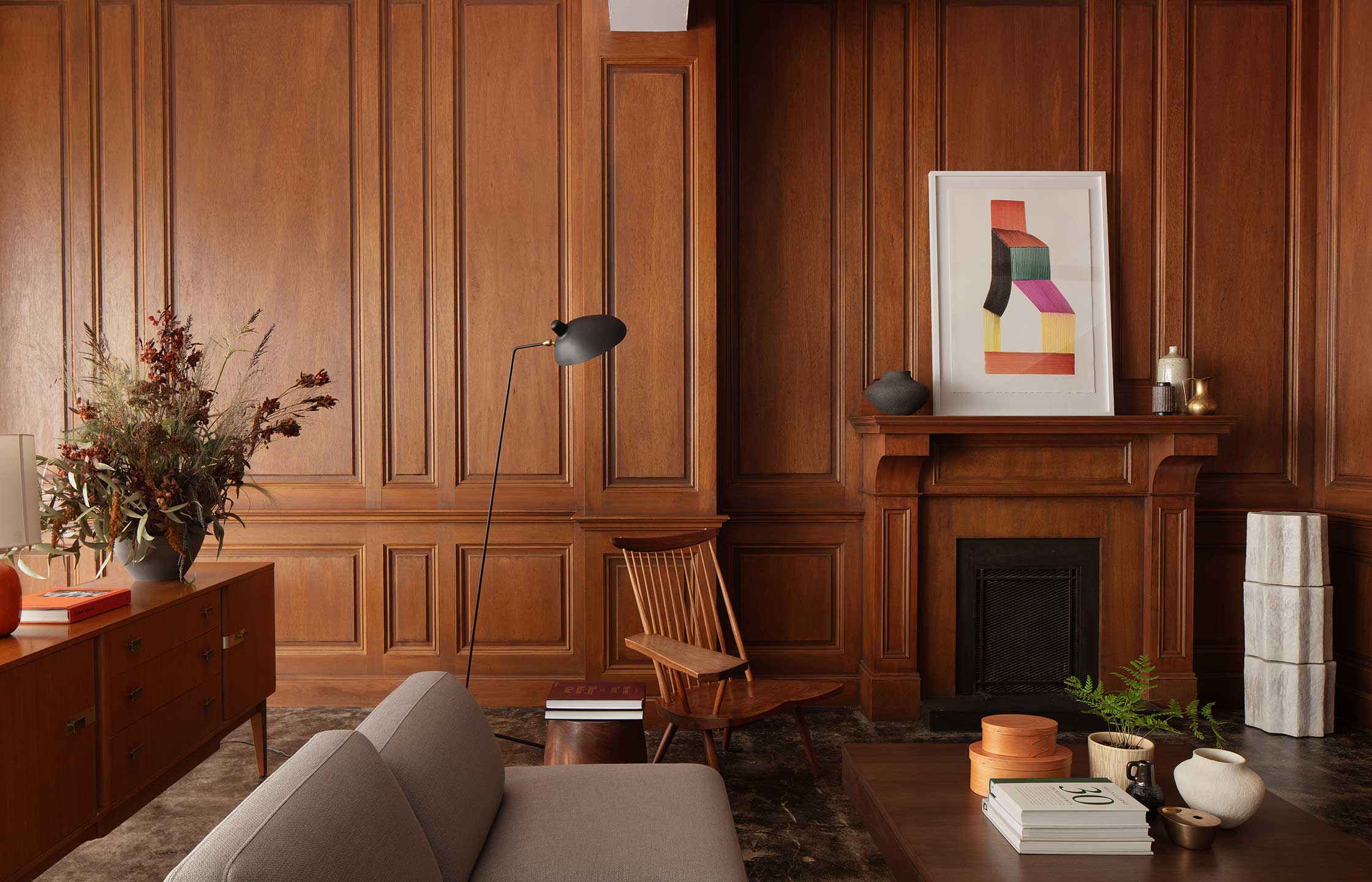





時代を経過したものが持つ力強さと美しさ。
一方で現代のテクノロジーやクリエイションが持つ可能性。
洗練とノスタルジック、一見相反するものを並列に合わせることで生まれる共鳴は、
今を生きる私たちの暮らしをリファインする、ひとつの新しい考え方。
自然が生み出す力、無名の職人が作り出してきた民具や民藝、
脈々と受け継がれてきた風趣や文化、
そして新しい才能や技術から生まれたコンテンポラリーなものやマテリアルなど、
これからの価値観で暮らしをクリエイトする愉しさ。
Items that transcend eras possess a certain strength and beauty. At the same time, there are the possibilities of today’s technology and creativity.
Sophistication and nostalgia. The resonance born from juxtaposing these elements yields a new way of thinking, refining our current way of life.
The power of nature, folk tools and crafts shaped by the hands of unknown makers, culture and character inherited from the past, contemporary items and materials derived from new talents and techniques.
There is joy to be found in creating a way of life based on future values.







IDÉE - New Direction #5 - Early Spring 2024
東京を拠点に活動。デザイン・アンソロジーとその親会社であるフィフス・ブラックのクリエイティブディレクター。ブランド戦略家、エディトリアルコンサルタントとして、イソップ、ルイ・ヴィトン、ローズウッドホテルなど、世界的なクライアントのプロジェクトを手がけている。
Based in Tokyo, Jeremy Smart is a creative director, brand strategist and editorial consultant, delivering projects for a global roster of clients such as Aesop, Louis Vuitton and Rosewood Hotels, through his role as creative director of Design Anthology and its parent company Fifth Black.
建築、デザイン、都市のライフスタイルを主要テーマとするオーストラリア出身のフォトグラファー。人々の暮らしをより良いものにすることに注意を置き、長いスパンでじっくりと仕事に取り組み、この10年は、アジア太平洋地域を舞台に、遺跡から現代建築まで多岐にわたるプロジェクトに参加。最近は映像制作や出版および展示プロジェクトにも活動領域を広げている。
Ben Hosking is an Australian photographer specialising in architecture, design & urbanism. His interest lies in its ability to transform the human condition & alter lives for the better. Taking a slower, more long form approach to image making, he has worked through the Asia pacific region for 10 years documenting a wide range of projects that vary from archaeological sites to contemporary architecture. More recently he has turned his attention to moving image & publishing/print media projects.
今回のスタイリングは、アジア発のインテリアデザインマガジン "design anthology" のクリエイティブディレクター、ジェレミー・スマート氏によるもの。東京に住んで約1年半となる彼に、イデーディレクターの大島が話を聞いた。
For this feature, Jeremy Smart, creative director of Asia-based interior design magazine Design Anthology, oversaw the styling of the visuals. Smart has been living in Tokyo for around eighteen months and sat down for a discussion with IDÉE director Tadatomo Oshima.
まずはじめに、ジェレミーさんのことを皆さんにお知らせしたいので、どこの国の出身で、どうして今日本で暮らしているのかを聞きたいなと。
私はオーストラリア出身で、20代半ばまで母国で生活していました。最初は大学で勉強していましたが、メルボルンの雑誌社でグラフィックデザイナーとして働き始めたので中退しました。
オーストラリアは自然が多くとても美しいところですが、自分がもっと大きな都市で、より世界に繋がっていて、興味深い場所に引っ越したいと思い、香港への移住を決めました。2017年にパートナーと移住し、その数カ月後に"design anthology"のアートディレクターを務めることになりました。
First of all, I’d like you to introduce yourself. Where are you from and what brought you to Japan?
I’m originally from Australia and lived there until my mid-twenties. First I was studying at university, but dropped out when I started working as a graphic designer at a magazine in Melbourne.
Australia is an incredibly beautiful place with lots of nature, but I wanted to move to a big city that was closer to my interests and the rest of the world, so I decided on Hong Kong. I moved there with my partner in 2017. A few months after I arrived, I was asked to be the art director of Design Anthology.
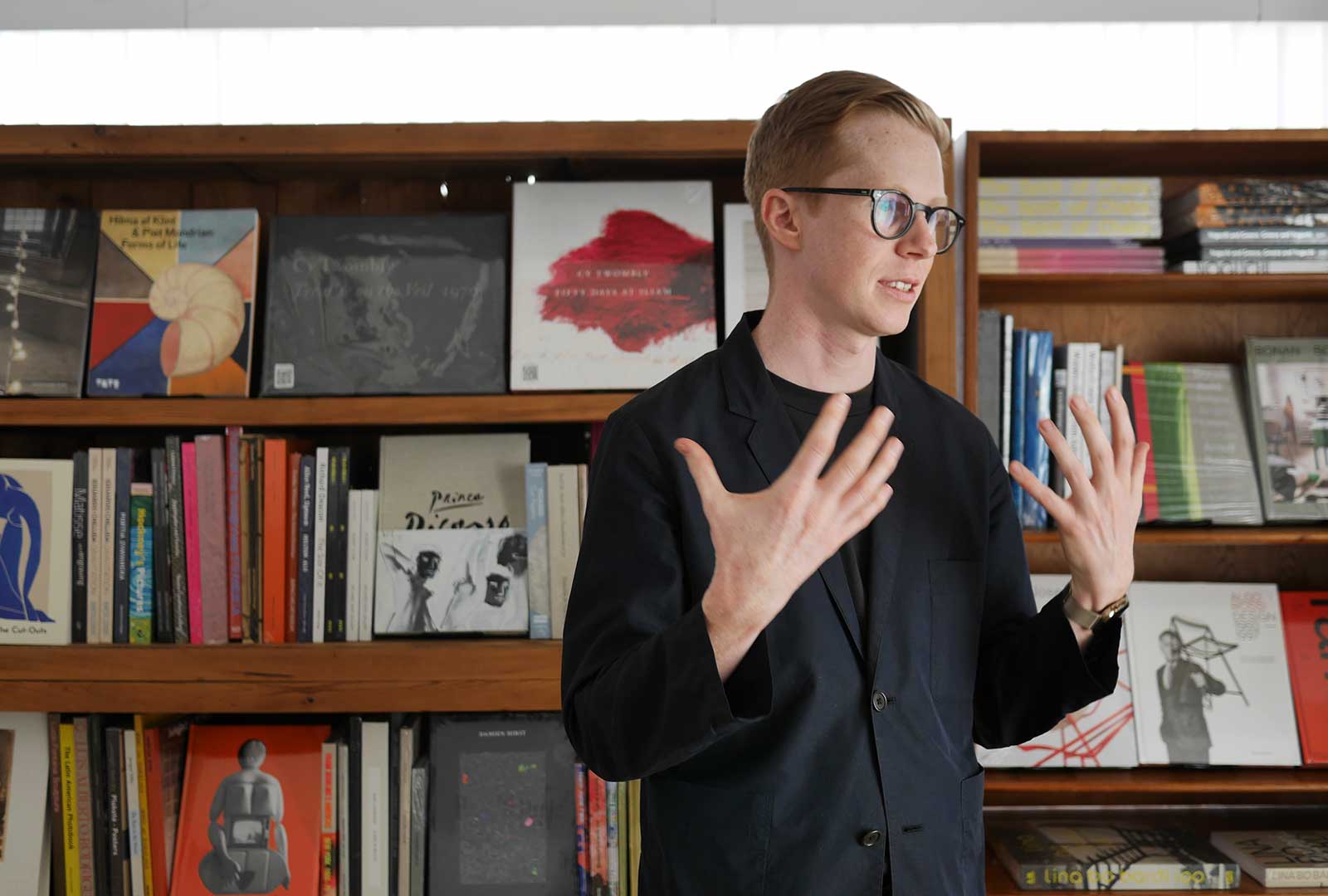
香港のどういったところが興味深かったのでしょう?
オーストラリアは国としてはすごく大きい土地ですが、所属できるコミュニティや環境が自分には小さすぎると感じていて。もっとエネルギーがたくさん湧いてくるアジアという地域にすごく興味があったので、まず香港に移住しました。移住してから東アジア、東南アジアなどの他のアジアの地域を訪ねることも多くなりました。
現在、香港を拠点に2014年から発行されているインテリアデザインマガジン"design anthology"のクリエイティブディレクターをされていますが、この仕事に携わるきっかけは何だったのでしょう?
アジア圏に暮らしていると、雑誌やさまざまなメディアで西洋のカルチャーの情報というのは多く入ってきますが、その逆の、アジアの日々の生活の中にあるデザインやカルチャーを英語でアウトプットしているものがほとんど存在しないことに気づきました。実際に私はオーストラリアとアジアを行き来していて、こんなにもたくさん興味深くて伝えたいことがあるのに英語での情報が非常に少ないことにすごくフラストレーションがあって、この仕事に就きました。
なるほど。確かに英語で伝えているものは少ないですよね。僕も実は、日本の暮らしを海外に伝えたいなと思って、日本のさまざまな方のお宅に伺ってライフスタイルを取材して"LIFECYCLING"というバイリンガルのWEBマガジンを2011年からスタートし、現在も続けています。2015年には書籍にして、ヨーロッパ含め29か国で出版したことがありますよ。
そうなんですね。素晴らしいです!
What interested you about Hong Kong?
Australia is a large country in terms of area, but the community and environment I was a part of felt too small. I was really interested in Asia, which has a lot more energy, so I began by moving to Hong Kong. After the move, I had many opportunities to visit East and South-East Asia.
You’re currently the creative director of Design Anthology, a Hong Kong-based interior design magazine founded in 2014. What led you to this position?
Living in Asia, there is an abundance of magazines and media focused on Western culture, but at the same time, I realised there are relatively few English language titles covering the design and culture found within daily life in Asia. I was travelling back and forth between Australia and Asia and became frustrated that, despite there being so many interesting things to share, there was such a scarcity of information in English. That’s why I decided to take this job.
I understand. English-language content can certainly be hard to find. In fact, the reason I launched the bilingual web magazine Lifecycling, which features the homes and lifestyles of various people, in 2011 was my desire to share life in Japan with an international audience. The media has continued to this day. In 2015, a book was published and distributed in Europe and a total of 29 countries.
I see, that’s wonderful!
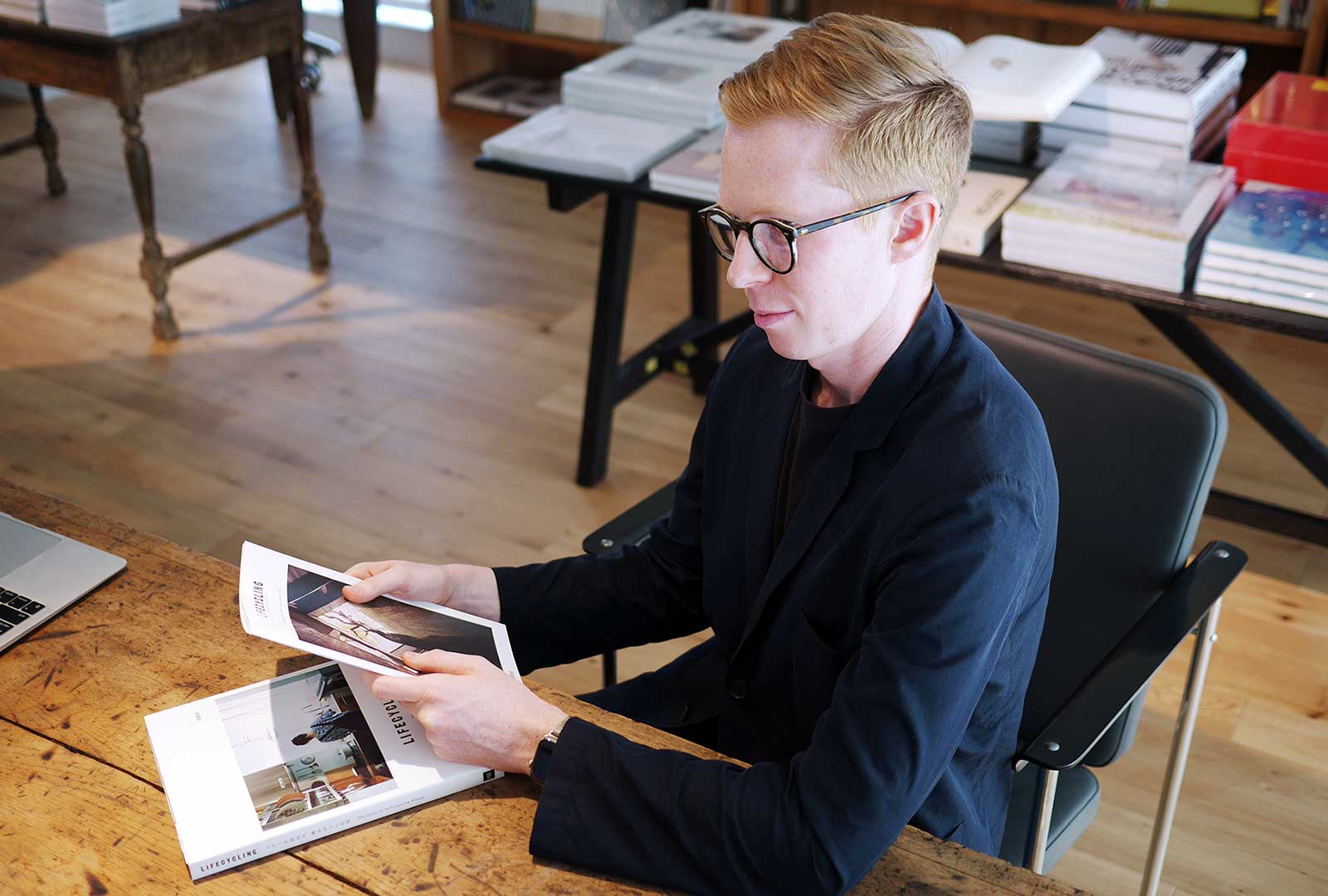
僕たちは同じ思いを持っていたんですね。
それから東京へ拠点を移されますよね。
香港に5年間住んだあと、パートナーとそろそろ他の拠点に移ろうかと考えはじめました。仕事はグローバルな案件が多いので、どこを拠点にしたらうまくいくだろうと考えて、日本の東京が良いんじゃないかと。東京なら自分達の求める生活の質も変わらずに保つことができて、世界の中心であり、情報の発信もできると思い、2022年4月に東京に移住してきました。
それ以前にも、旅行や仕事で日本に来ることはあったかと思いますが、実際に東京で暮らし始めて何か変化はありましたか?
日本に来る前は日本語を話せないことが壁になるのではと思っていましたが、実際に暮らし始めたら思っていたより難しくはなかったです。東京という街はとても機能的で、例えば他の国と比べて電車が遅れないことなどもそうですが、予定通りに物事が進められるところは私にとって生活しやすい環境だと思っています。
今も日本語はあまり話せないですが、それ以外の方法でもコミュニケーションは取れますし、あまり言葉の壁は感じていないです。長く住み続けることで東京の社会のシステムに適応できるようになっていて、街に馴染み始めているので、やはり旅行に来るのとは違いを感じますね。
It seems that we were thinking along the same lines.
Next, you moved to Tokyo.
After living in Hong Kong for five years, my partner and I began thinking about our next move. I work on a lot of global projects and when I considered the best place to be based, I felt that Tokyo would be a good choice. Tokyo would allow us to maintain the quality of life we desired and its position as a global hub would allow me to easily disseminate information. I moved to Tokyo in April 2022.
I assume you had already been to Japan for work or a holiday, but did you sense anything different once you started living here?
Before coming to Japan, I thought that not being able to speak Japanese would be a problem, but it didn’t end up being as hard as I expected. Tokyo is such a functional city; for example, train delays are far less common than in other countries, and for me personally, the way things follow a schedule makes it an easy place to live. I can’t speak Japanese very well, but I can communicate in other ways, so I don’t really feel as though there is a language barrier. The longer I live in Tokyo, the more I am able to adapt to the society’s systems and the city, so it feels quite different to when I travelled here.
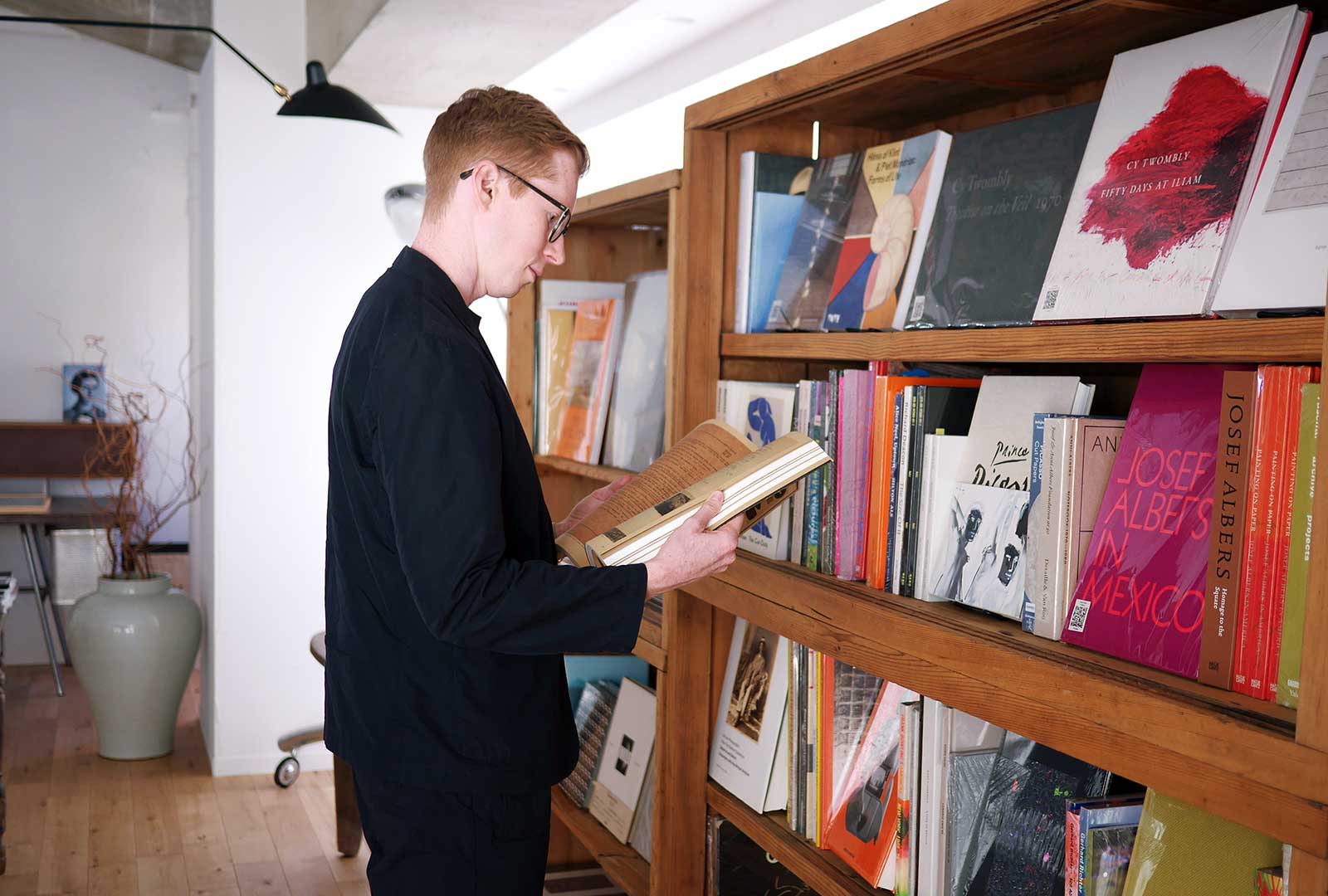
ジェレミーさんが日本のライフスタイルや、美意識について感じていることはありますか?
すべてにおいてのサイズの小ささにすごく魅力を感じています。
あぁ!オーストラリアって広大ですからね(笑)。
そうですね(笑)。オーストラリアは土地が大きいということもあるからでしょうか、家とか車とか食べ物とかどんどん大きくなっていて、でも日本はすべてがヒューマンスケールだと感じます。日本は狭い土地に人々がたくさんいて、密度の高い中で生活しなくてはいけないことから、結果としてもののサイズが小さくならざるを得ないのかもしれませんが、私にはそれがとても心地良く感じるのです。街や家のサイズがちょうどいいなと。日本の、すべてがコンパクトに収まっているデザインがすごく好きです。それによって人と人との接点が生まれやすいところも魅力ですね。
ただ、今一つ思っていることがあって…。私は日本の軽自動車とかが小ぶりで好きなのですが、最近街ではすごく大きな車を見かけることが多くなって、それが残念ですね(笑)。
確かに(笑)。でも、日本のサイズ感が好きって言ってくれる人に僕は初めて出会いました。日本の伝統的な、自然とか侘び寂びとか、そういったことはよく聞きますが、新たな視点ですね。
ジェレミーさんが暮らしの中で大切にしていることは何でしょうか?
常にバランスを保つことですね。自分の生活をデザインする上で、その完璧なバランスを保てるのが東京でした。
What are your impressions of Japanese aesthetics and lifestyles?
It’s so appealing to see how everything is so small.
Of course, Australia is such a large country! [laughs]
That’s right [laughs]. I’m not sure whether it’s due to Australia’s large land mass, but houses, cars and food are all gradually getting bigger, whereas in Japan everything seems to be much more human scale. In Japan, there is a large number of people in a small area, meaning that they must live in a high density environment, so perhaps that’s why everything is so small. I personally find it very comfortable. Cities and houses seem to be just the right size. I particularly like Japanese designs where everything is combined in a compact way. The way this creates points of contact between people is another appealing point.
However, I just remembered something… while I like the small size of Japanese light vehicles, it seems there are a lot more large vehicles on the road these days, which is a bit of a shame [laughs].
I know what you mean [laughs]. However, you’re the first person I’ve met who’s said that they like Japan’s sense of size. People often highlight Japan’s traditions, nature, wabi-sabi and so on, but your perspective is quite new. When it comes to your lifestyle, what do you place importance on?
Always maintaining balance. When designing my way of life, Tokyo was the place where I could find the perfect balance.
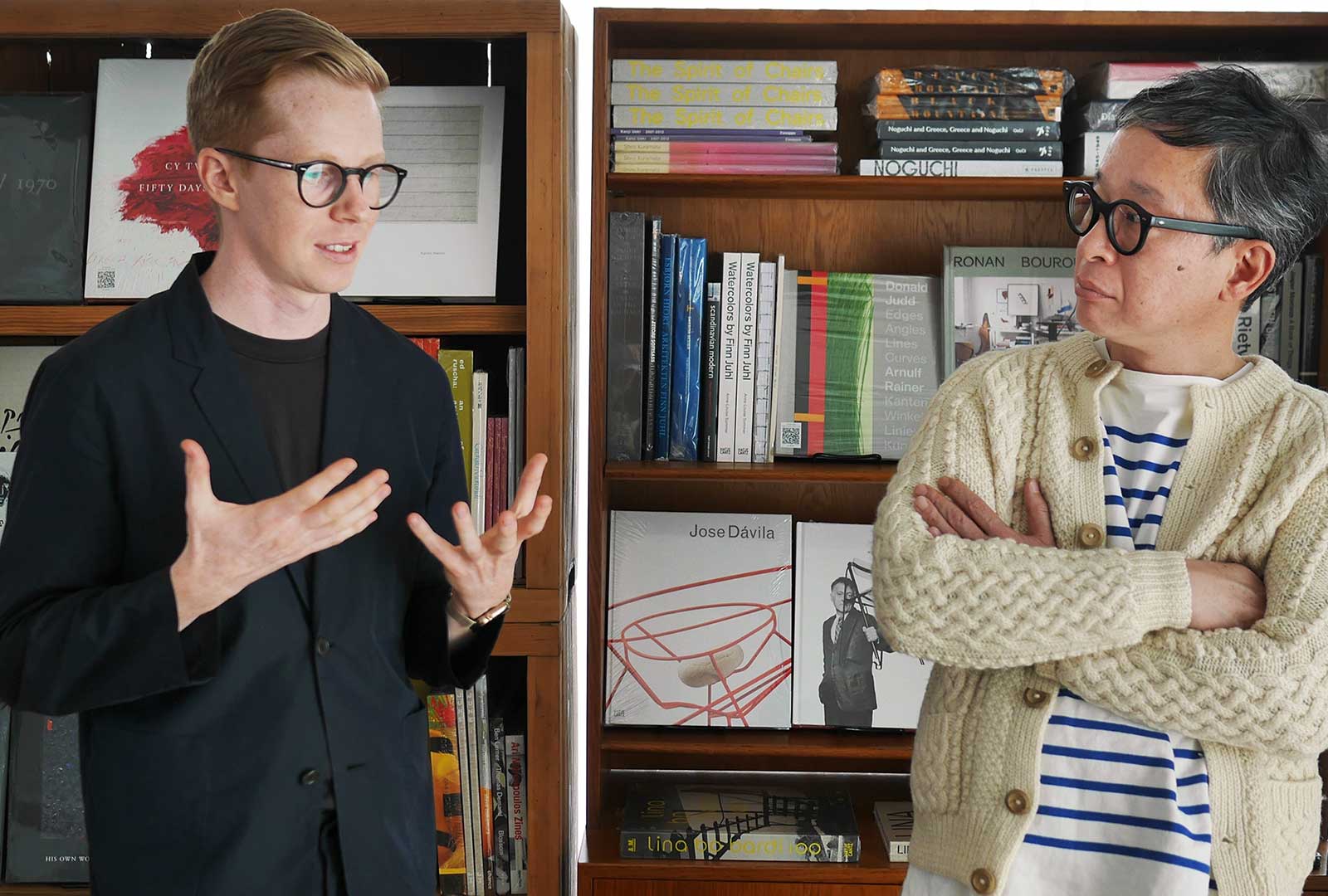
バランスというのは、仕事とプライベートのバランスですか?
そうですね。私の仕事はそのほとんどがインターナショナルで、常に外に向けられ、仕事の場は実にさまざまなのですが、東京の自宅はとても良い環境に囲まれています。自宅の近くに神社があり、神社の中には森があって、そして歩いて5分の距離には代々木公園があるのでランニングができます。そこからまた少し歩くと今度は情報が溢れる渋谷に着きます。
渋谷がオンのモードだとしたら、歩いて自宅に帰るとすぐにオフの過ごし方ができる。いつでも何にでもアクセスしやすい小さいスケールの中でオンとオフの切り替えがうまくできていて、そういった良いバランスを保つことを大事にしています。そして東京はそれが実現できる場所ですよね。
近い距離に都市もあって自然もあってと、先ほどもお話していたように日本や東京のサイズのコンパクトさが、オンオフを切り替えて良いバランスをもたらす要因にもなっているということですね。
日本に移住する多くの人は東京に拠点を構えます。彼らの東京移住のきっかけには、デザインやアートに関するカルチャーだけでなくて、他にもアニメや漫画や映画などそれぞれが影響を受けてきたものがあります。日本、中でも東京から発信されたカルチャーが、海の向こうで評価されて、それに興味を持った人が東京に来るようになることで、アメリカやヨーロッパのカルチャーも東京に来る。それがまたさらに日本でアップデートされて、より良くなっていくのだと私は思います。
日本の国のサイズも東京の街のサイズも決して大きくはないのに、すごくダイバーシティで多方面にものごとを発信している現場を近くで見られるというのが、東京での暮らしですごく楽しいことの一つです。
Oshima: When you say balance, are you referring to work-life balance?
That’s right. Most of my work is international, meaning that I’m always looking outwards. I work in a range of places, but my home in Tokyo provides a really nice work environment. There’s a shrine nearby with a forest within the grounds, and within five minutes’ walk I can be at Yoyogi Park for a run. Walking a little further I can be in Shibuya, which is filled with information. While Shibuya makes me switch on, the walk home allows me to quickly switch off. In a small area where you can easily find anything at any time, I place importance on switching between “on” and “off” modes in order to maintain a good balance.
The downtown areas and nature are in close proximity, but as you mentioned, the compact size of Tokyo and Japan plays a role in allowing you to switch between “on” and “off” to find a good balance.
Many people who move to Japan settle in Tokyo. The reasons for this vary, influenced not only by design, art and culture, but also anime, manga and films. The culture transmitted from Japan, including Tokyo, is appreciated around the world and attracts people to Tokyo, bringing with them American and European culture. I feel that this culture is then updated and improved in Japan. Although Tokyo and Japan are relatively small in size, culture is disseminated in a really diverse and multi-faceted way, and witnessing this up-close is one of the things I love about living in Tokyo.
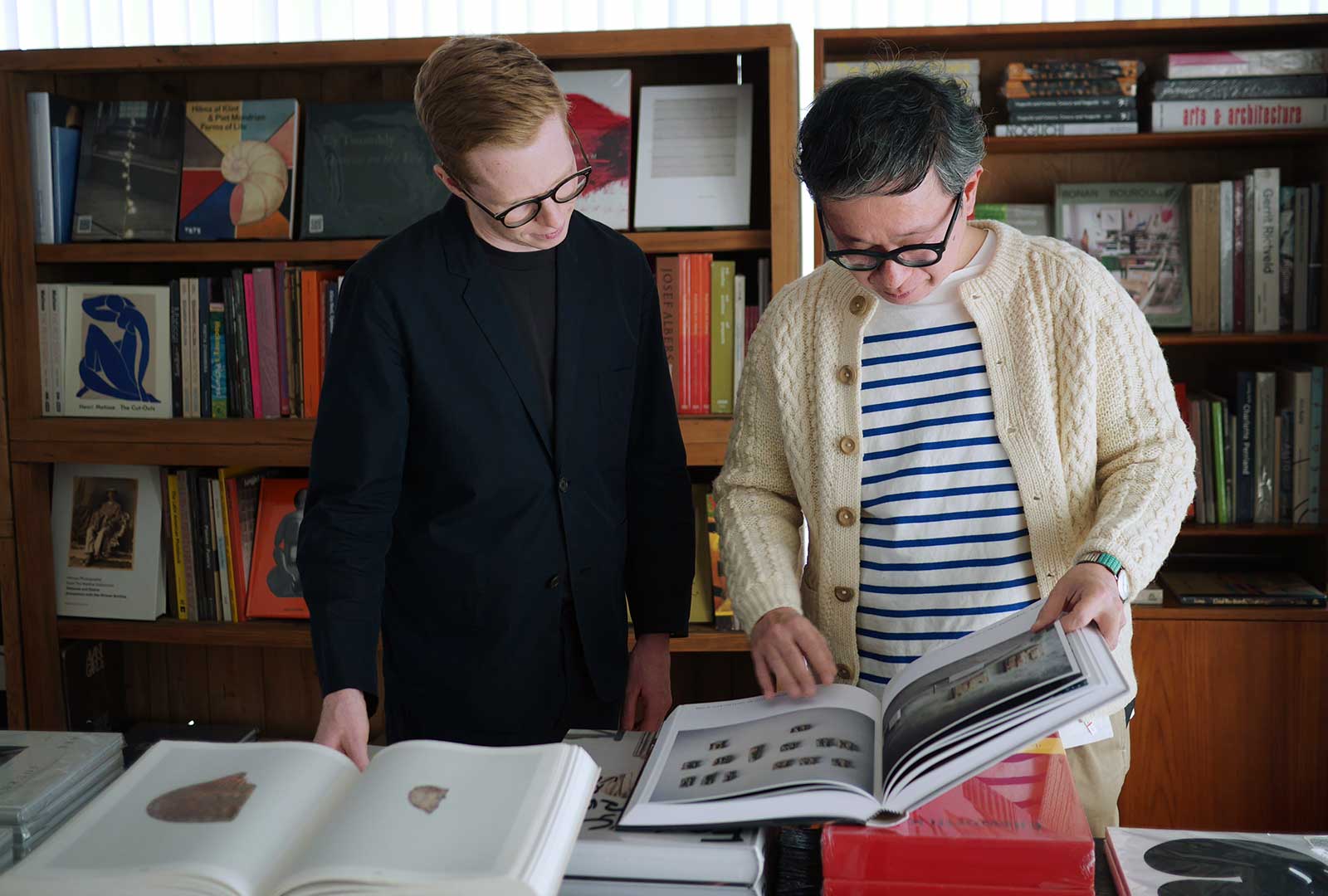
なるほど。そして今回、日本在住歴1年半ほどのジェレミーさんにスタイリングのオファーをさせていただいたのですが、そもそも日本のブランドであるイデーのことはご存じでしたか?
もちろん知っていました。最初に見たのは、香港のMUJIのお店です。でも日本にある店舗に行ったことはなかったので、オファーを受けてから知り合いにイデーの詳しい話を聞きました。そして知れば知るほど、イデーは日本のインテリア界のパイオニアであると感じました。日本のプロダクトを日本だけに留めず広めてきた素晴らしいブランドで、そういったブランドは他にはあまりないのではと思いました。
そういった印象を持ってくださっているのは嬉しいです。僕らが今回ジェレミーさんにオファーしたのも、日本を飛び越えて、もっと海外の方にも興味を持ってもらいたいという思いがあったからなので、それが少しでも伝わっているようだったら、今後も積極的に海外へ発信していきたいなと改めて思いました。
ジェレミーさんは今回スタイリングの仕事をするのが初めてだと伺いましたが、オファーに対してはどのように受け止められましたか?
初めてのことだったので、すごく大変なチャレンジだと思いましたが、始まる前からすごく楽しみでした。普段は実際に手を動かして物理的に何かをつくるということはしないので、こんなにクリエイティブでワクワクできる仕事は今までありませんでした。もちろんゴールは定められていましたが、楽しくできました。
今回の撮影のテーマは"Newstalgia"という造語ですが、そのワードに込められた意味を聞いてどのように思いましたか?そして、どのようにスタイリングで表現しようと考えたのでしょうか?
"Newstalgia"というワードを聞いて、面白いアイデアだなと思いました。この言葉に含まれる"nostalgia"は懐かしさや郷愁という意味で、過去の出来事を思い出させることですが、それが実際にあった出来事である必要はないと思います。そして人それぞれに経験してきたことは違うので、懐かしさを感じるポイントもそれぞれだなと思いました。なのであるものを提示したら、それがそれぞれの懐かしさのトリガーポイントになって、具体的な思い出ではないけれども、自分の記憶の扉を開けるきっかけになるっていうことを自分の中ではコンセプトにしました。今回完成したビジュアルを見て、誰かの記憶の扉にアクセスすることができればいいなと思います。
I understand. On this occasion, we invited you to oversee the styling of this feature. Having lived in Japan for around eighteen months, were you already familiar with the IDÉE brand?
Smart: Of course. The first time I saw the brand was at a MUJI shop in Hong Kong. However, I hadn’t been to one of your shops in Japan, so upon receiving your offer I spoke to one of my contacts about IDÉE. The more I learned, the more I sensed that IDÉE is a pioneer in the world of Japanese interior design. As a wonderful brand spreading Japanese products in not only Japan but around the world, I don’t think there are many others like it.
I’m glad to hear that. The reason we approached you was that we want to move beyond Japan to connect with more people around the world, so even if only some of our message gets through, I want to continue working to actively share IDÉE with an international audience. I heard that this was your first styling commission. How did you approach it?
It was my first time, so I knew it would be a serious challenge, but I was really excited to get started. I don’t usually physically create things by hand and so the work was more creative and exciting than anything I’ve done before. Of course, there were goals to be met, but the work was a lot of fun.
The theme of the shoot was "Newstalgia" and so when you heard the meaning behind this expression, what were your impressions? And how did you aim to express the theme through your styling?
When I heard the expression "Newstalgia" I thought it was an interesting idea. It contains the word "nostalgia", which is about thinking about past events, but I don’t believe those events have to have necessarily taken place. Everyone has different experiences, so the things that make them feel nostalgic can vary. I came up with the idea that by presenting certain things, they could be the trigger for different kinds of nostalgia and open the doors to one’s own memories. I hope that by looking at the visuals, people will be able to access their memories.
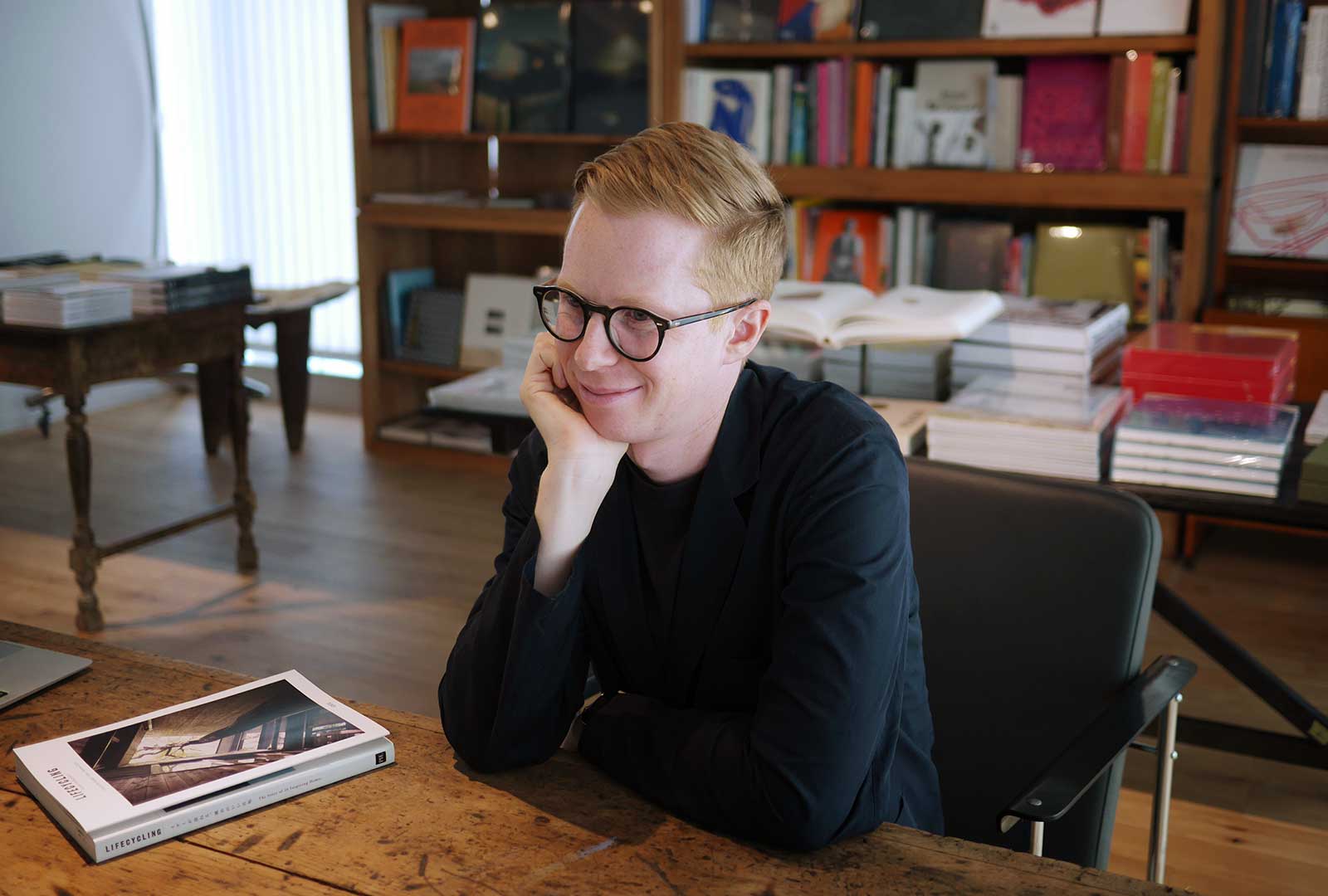
"Newstalgia"というテーマではノスタルジックと洗練、懐かしさと新しさという一見相反するものを組み合わせることによって生まれるムードを表現できたらと考えていました。今回のジェレミーさんのスタイリングの中にも、ヴィンテージのような古いものと一方で現代アートや作家もの、プロダクトがうまく共存していてとても新鮮な印象を受けました。
家にしても家具でも服でも何かを買おうとすると、一般的に新しいものを買うことが多いかと思います。
でもイデーは新しいものだけでなくヴィンテージも取り扱っていて、ものを大切に使う意識やものへの愛と尊敬を感じます。そしてそのヴィンテージアイテムを使って、今回スタイリングできたことがすごく楽しかったです。
そう言ってもらえると嬉しいです。どうもありがとうございました!
The theme of "Newstalgia" brings together nostalgia and sophistication, as I wanted to express the mood produced by combining the nostalgic and the new, which are seemingly contradictory elements. Your styling made use of old, vintage-like pieces, contemporary art, works by artists and products, all of which successfully coexist in a fresh manner.
Whether it be something for the home, furniture or clothing, people generally purchase new things. However, IDÉE not only has new items but vintage pieces too. I feel there’s a sense of treating things with care, as well as having an affection and respect for them. Styling the vintage items was a really enjoyable part of this shoot.
I’m so glad to hear that. Thank you very much!